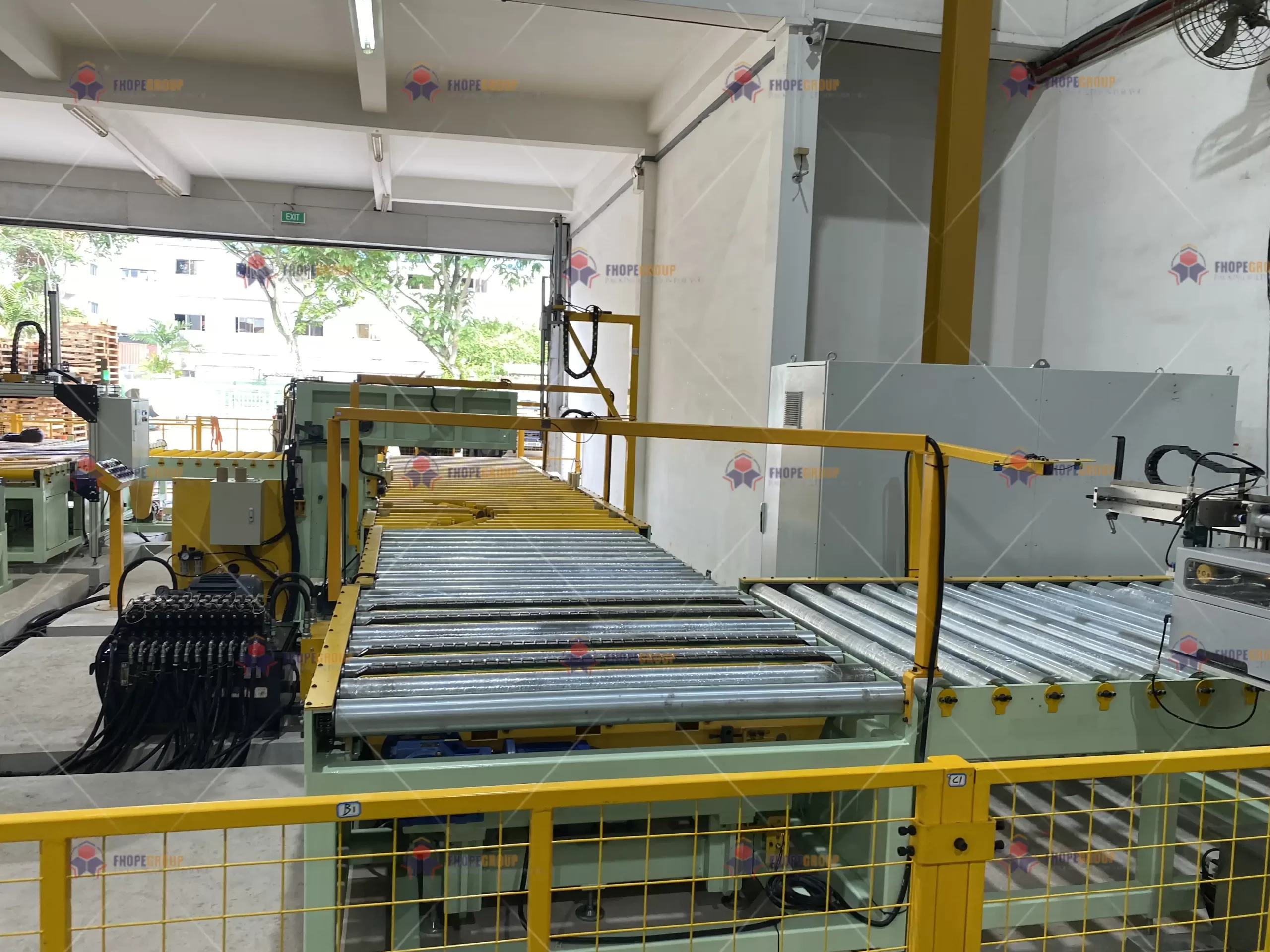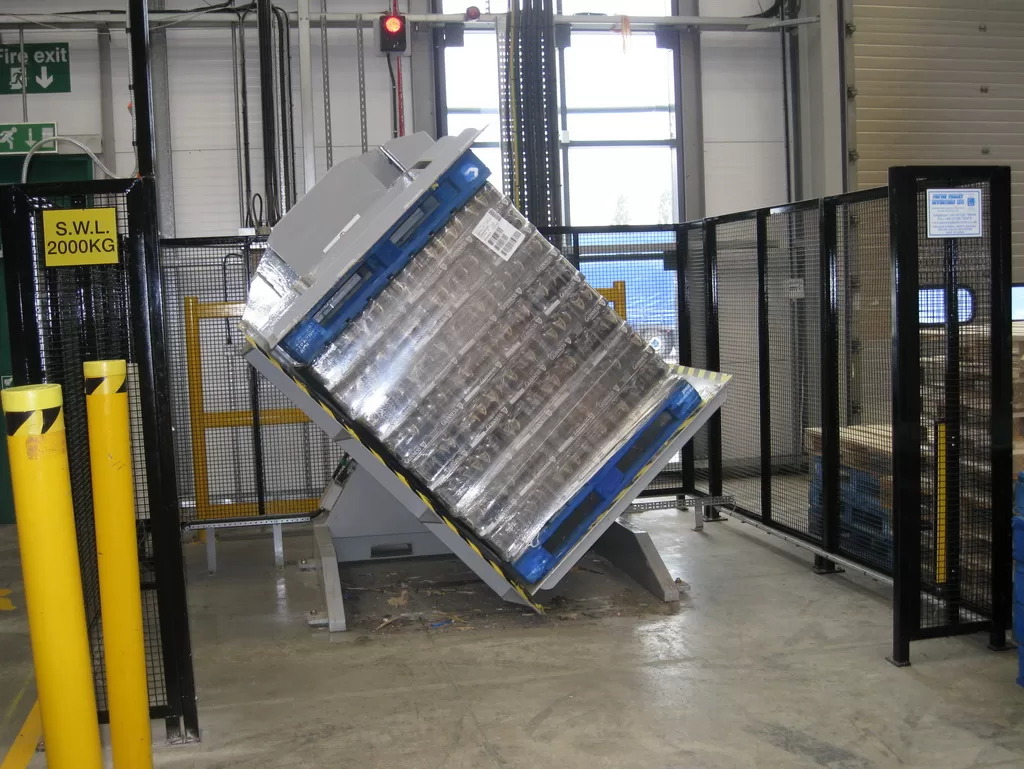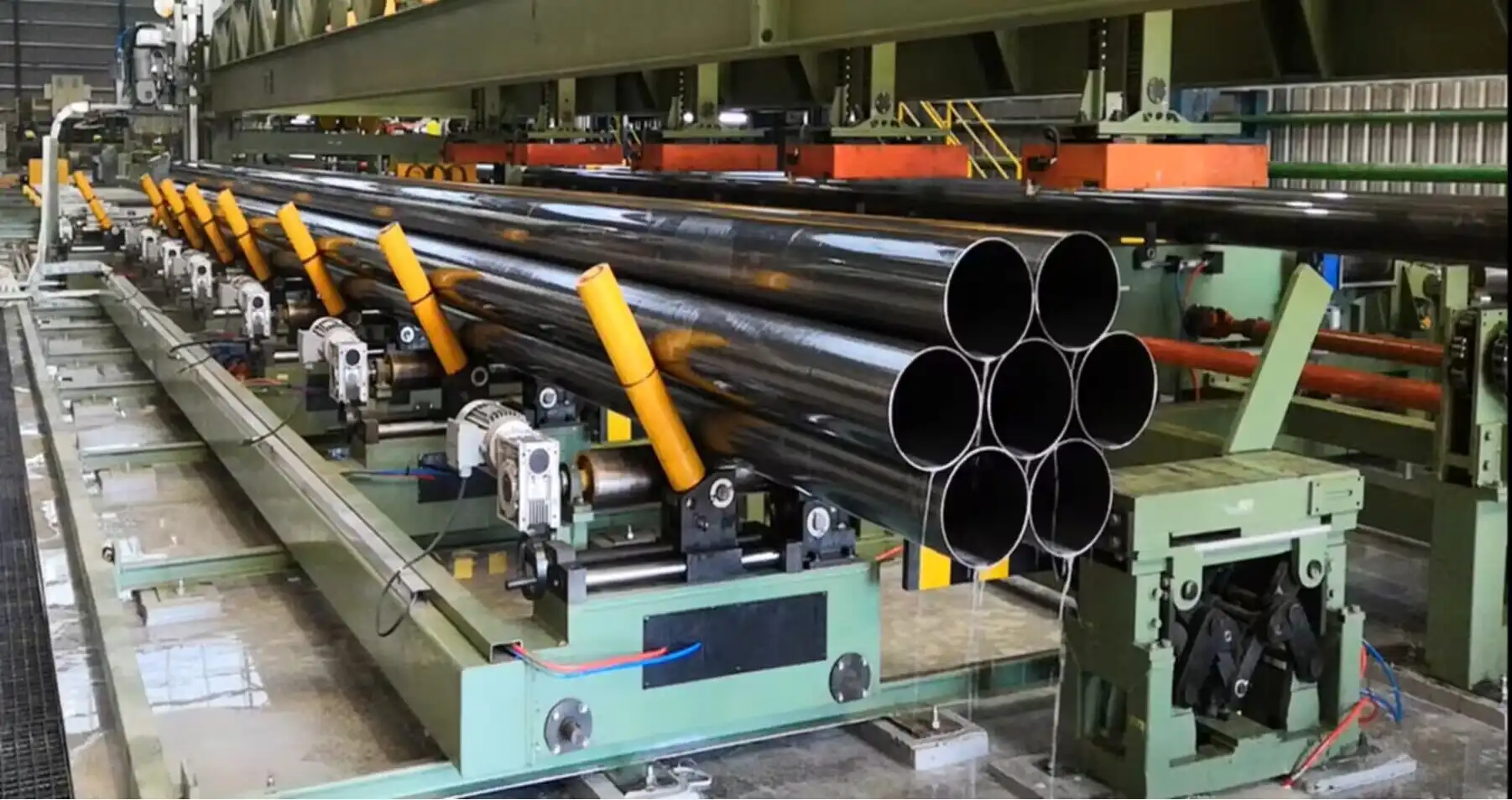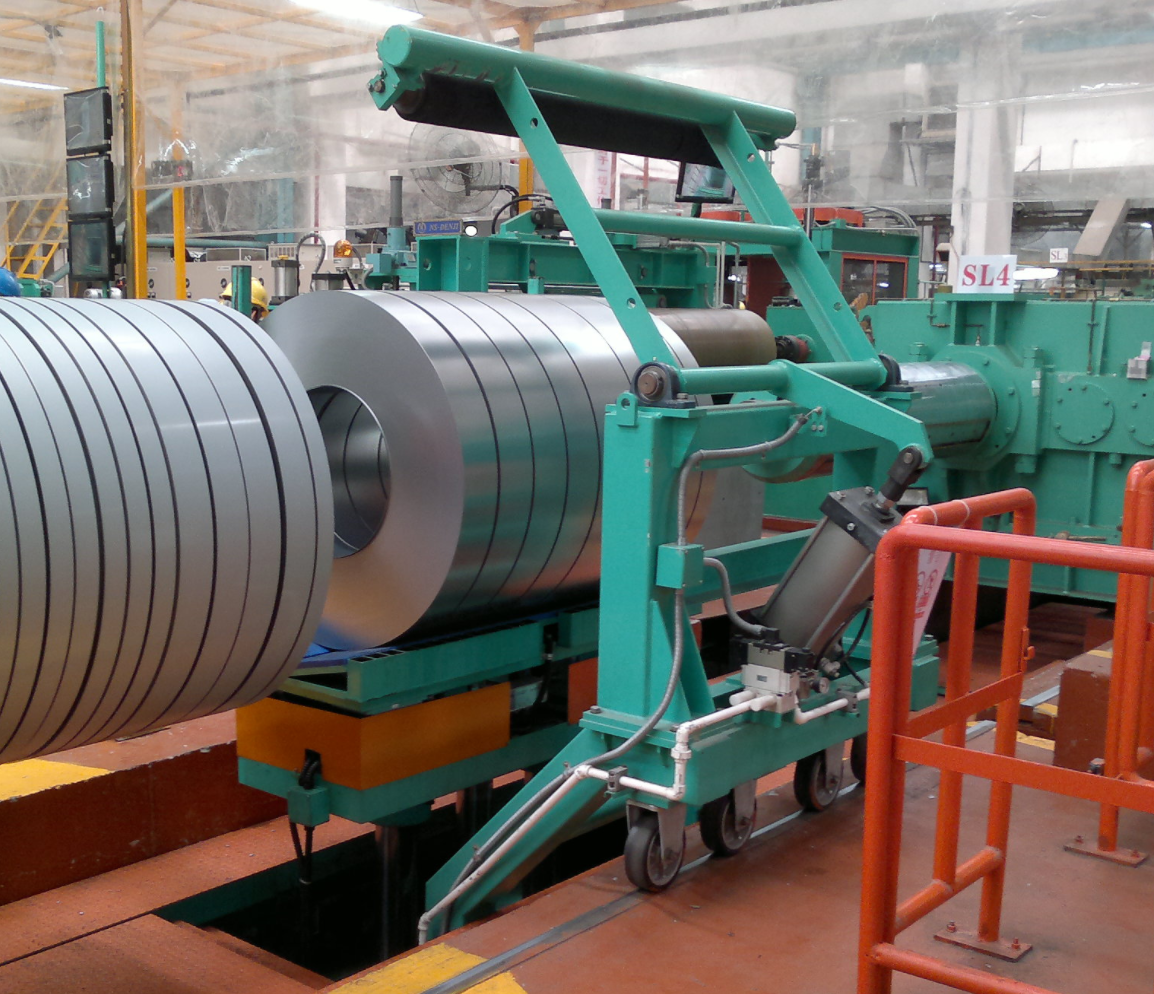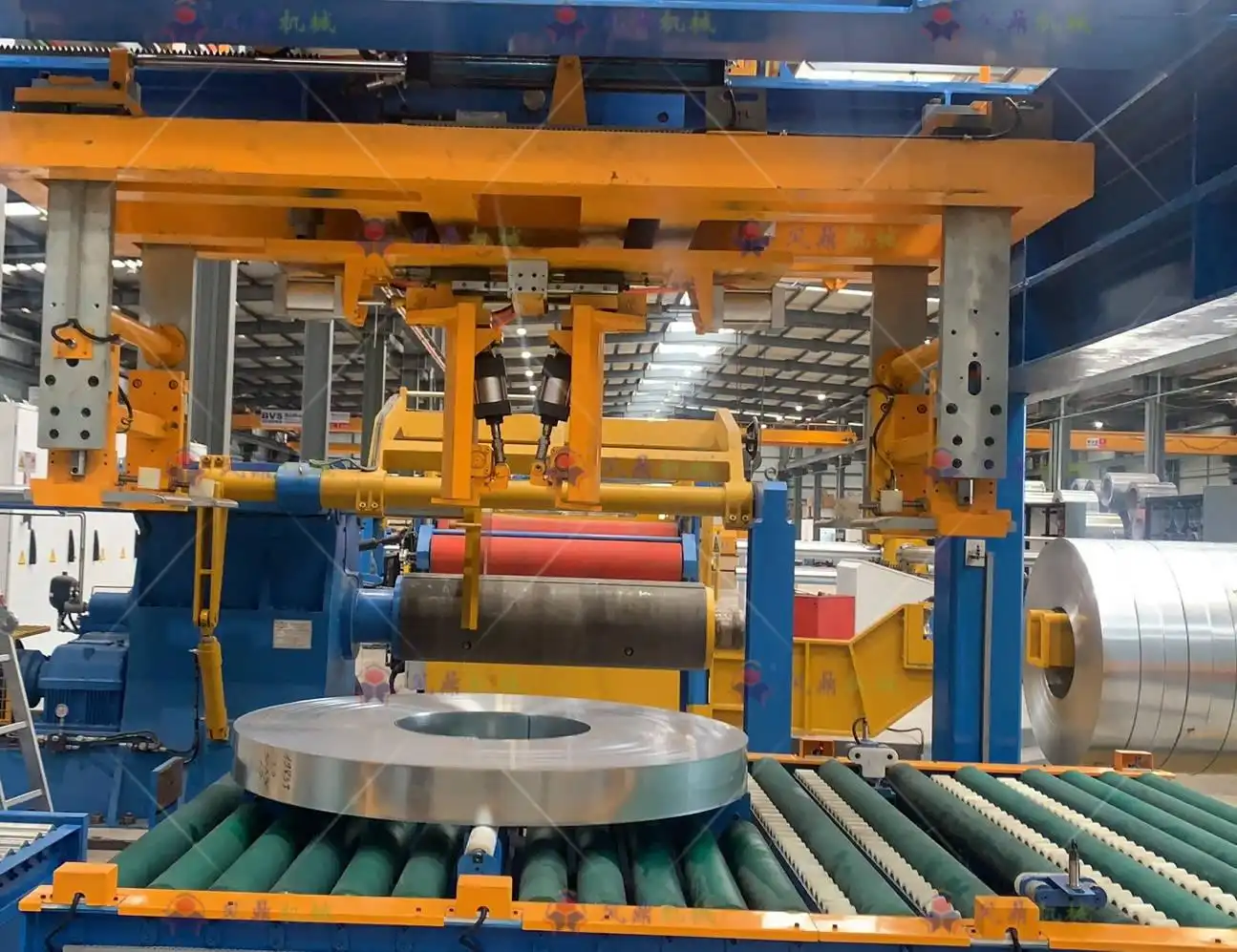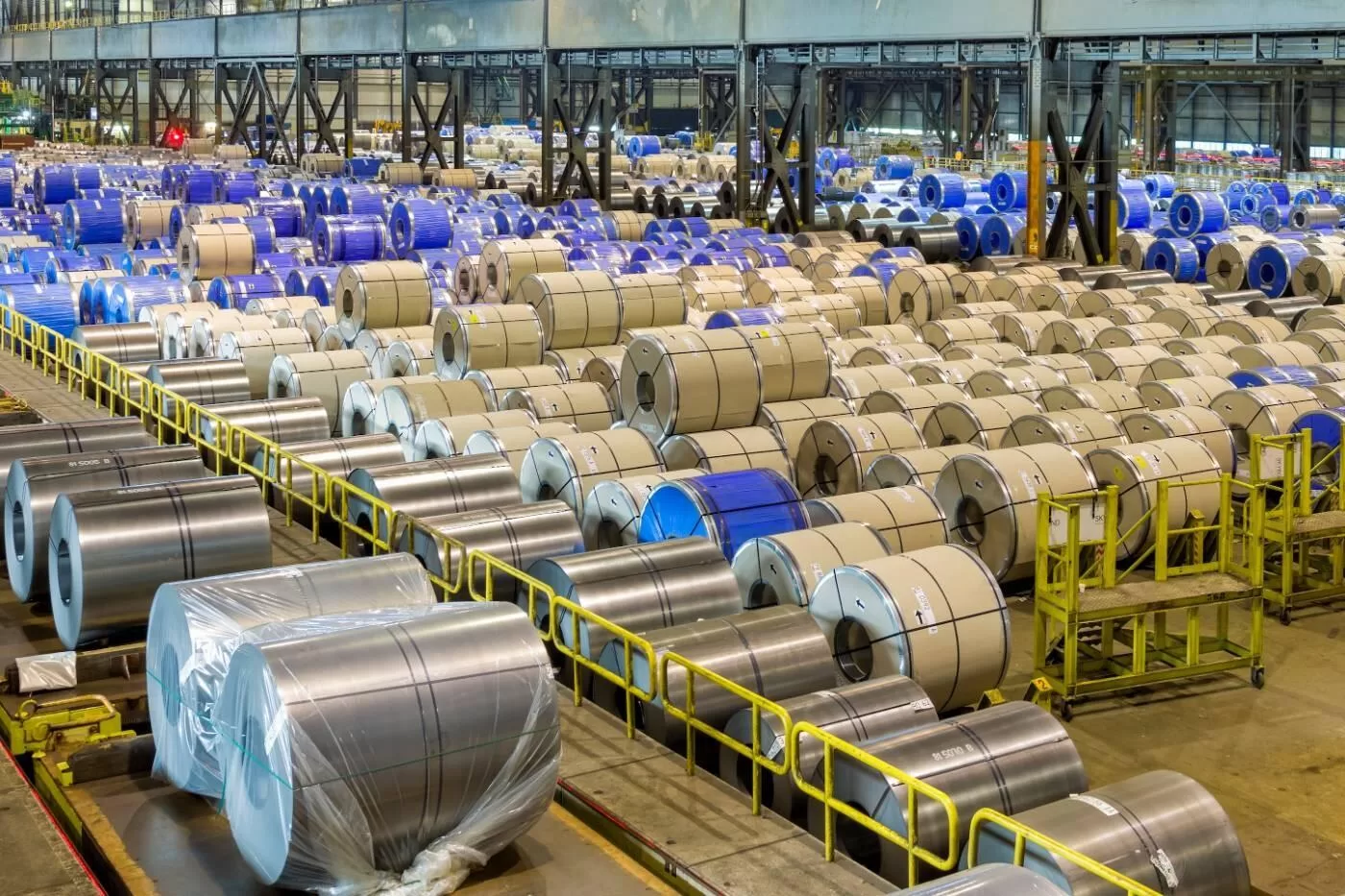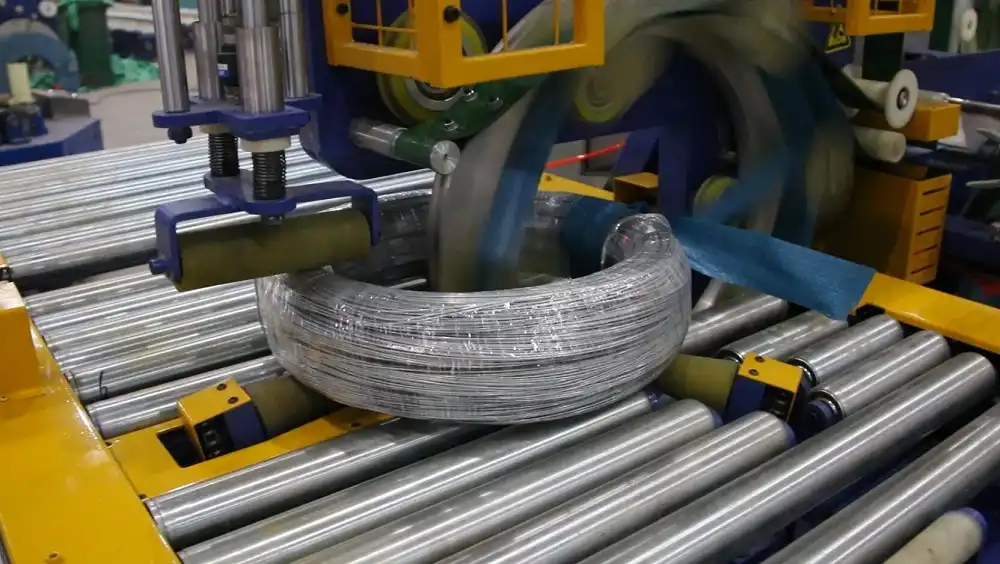The growing demand for safe, efficient steel coil handling in industries makes coil upenders an essential tool. But before investing, consider the initial costs, operational savings, and potential productivity gains. It’s vital to assess if these machines align with your specific packaging and safety needs.
Steel coil upenders are a worthwhile investment for businesses focused on improving handling efficiency and safety. They enhance workflow by automating the coil turning process, minimizing manual labor, and reducing the risk of workplace injuries. These machines provide a cost-effective solution by reducing damage during handling, thus saving on long-term costs.
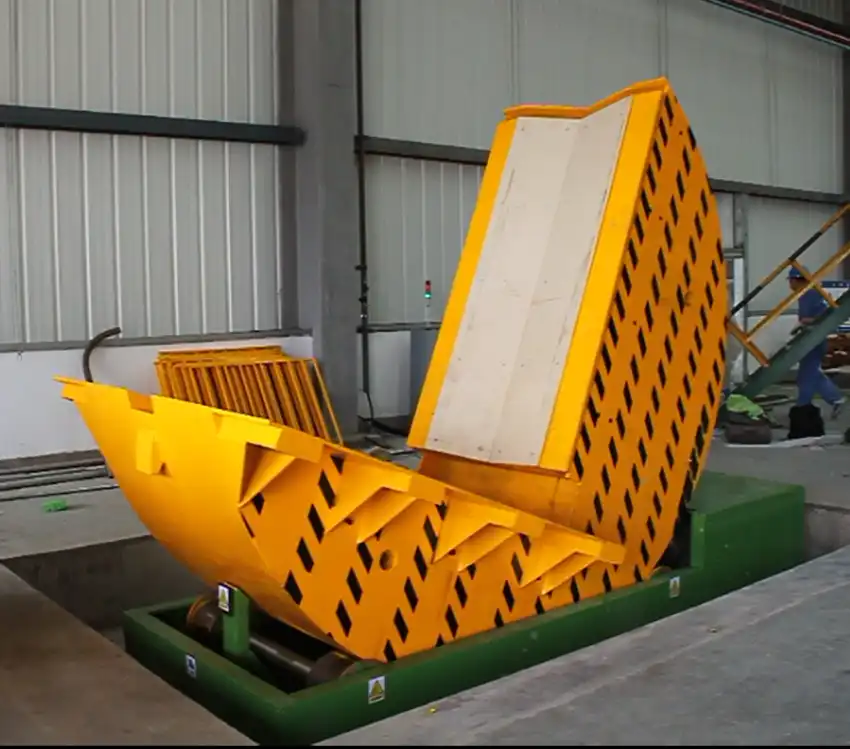
As an engineer with a decade-long experience in packaging machinery, I understand the hesitation over investing in new technology. Yet, the benefits of steel coil upenders in streamlining operations often outweigh initial costs. Stay with me as we dive deeper into the value they bring to your workflow.
1. What is the function of a steel coil upender?
In the complex world of manufacturing, handling steel coils presents various challenges. Safety and efficiency are paramount, and a steel coil upender addresses these issues. Discover how this crucial tool revolutionizes coil handling for busy plants.
A steel coil upender, also referred to as a coil tiler, assists in rotating coils from a horizontal to a vertical position or vice versa. This improves handling safety and reduces the risk of accidents. By automating the flipping process, it ensures ease of handling and maintains the coil’s structural integrity during transfer.
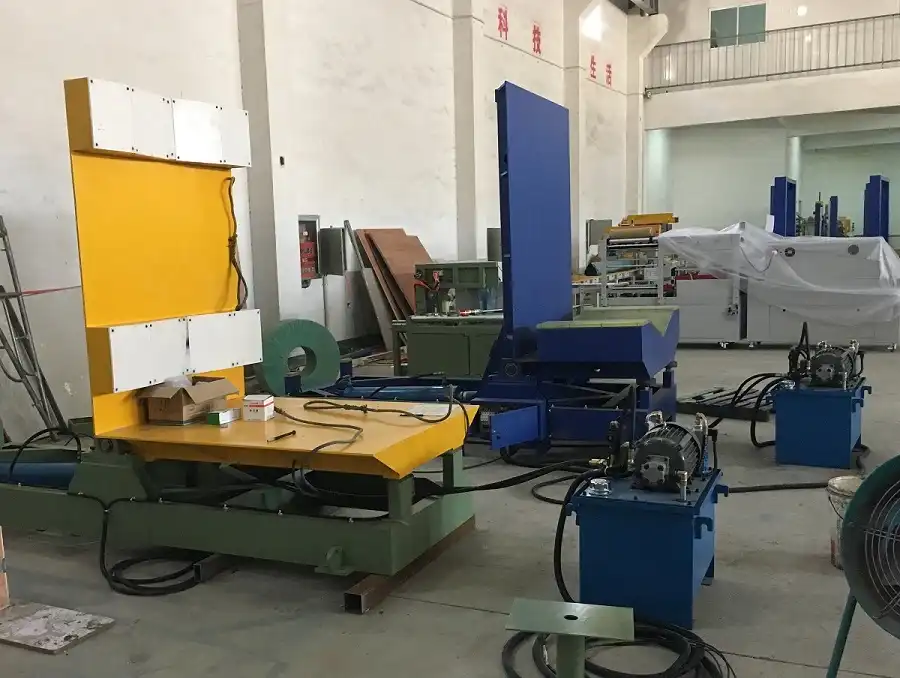
How Steel Coil Upenders Improve Operational Workflow
Steel coil upenders transform the way manufacturers handle heavy coils. By reducing manual labor, they boost productivity and ensure employee safety. Here’s how they fit into the manufacturing ecosystem:
-
Enhanced Safety:
Steel coil upenders significantly reduce manual handling, decreasing the potential for injury. Operators can work with peace of mind, knowing that the risk of accidents, common with manual handling, is minimized. -
Increased Efficiency:
Manual coil handling is labor-intensive and time-consuming. With an upender, you expedite this process while maintaining consistency and precision, crucial for meeting manufacturing deadlines. -
Cost-Effectiveness:
Initial investments in coil upenders pay off by lowering labor costs and reducing product damage. The consistent performance of these machines leads to fewer faulty products and saves on operational costs in the long run.
Let’s take a glance at some typical specifications of steel coil upenders, which illustrate their integration into operations:
| Specification | Value |
|---|---|
| Load Capacity | Up to 50 tons |
| Flip Angle | 90 degrees |
| Speed | 0-2 RPM |
| Power Supply | Hydraulic/Electric |
Each feature of the coil upender is designed to meet specific manufacturing needs. In my experience, understanding the machinery’s capacity and features ensures it is a valuable asset. Investing in these machines aligns with the push towards automation in packaging and manufacturing sectors, marking a significant improvement in overall operational flow.
2. How does the cost of steel coil upenders compare to their benefits?
In the fast-paced world of manufacturing, cost efficiency is always a critical concern. For managing hefty steel coils, upenders are an important tool. Are these devices worth the initial investment? What benefits do they bring to manufacturing operations? Let’s delve into these questions.
Steel coil upenders, though initially costly, offer significant advantages such as improved safety, reduced manual labor, and enhanced workflow efficiency. These benefits usually outweigh the financial investment, especially when considering long-term cost savings and increased production reliability. The return on investment is often visible within a few months of integration.
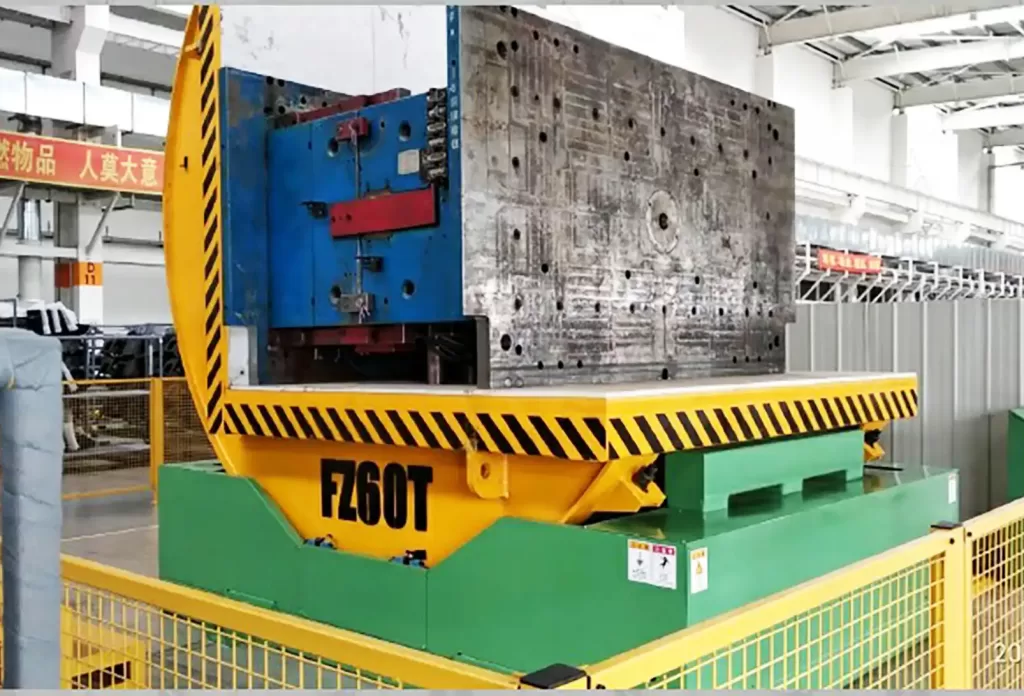
Evaluate the Cost-Benefit Aspect of Steel Coil Upenders
In evaluating the cost-benefit aspect, we must weigh both tangible and intangible benefits. On the tangible side, steel coil upenders reduce labor costs by automating the handling process and minimizing worker injuries. Companies report reduction in labor costs by about 20% annually. Intangible benefits include increased safety and improved worker morale, as manual handling of heavy coils is strenuous and hazardous. The equipment’s contribution to production consistency also reduces the financial liability associated with damaged goods, which is a cost-saving factor that is often underestimated.
Here’s a breakdown of costs versus benefits:
| Category | Costs | Benefits |
|---|---|---|
| Initial Investment | Equipment purchase | Reduced injury-related liabilities |
| Labor | Maintenance and training | Decreased labor costs; lesser manual intervention |
| Product Handling | Operational costs | Enhanced consistency and reduced product damage |
| Safety and Workflow | Safety compliance costs | Improved safety and efficiency; healthier work environment |
It’s evident that although the initial costs can seem hefty, the cumulative benefits significantly tilt the scale in favor of investing in steel coil upenders. These devices optimize operational efficiency, ensuring safer and more consistent production environments. Their ability to seamlessly integrate into existing workflows enhances the financial bottom line over time.
3. What factors affect the cost of steel coil upenders?
In the search for cost-efficient production solutions, understanding the cost structure of steel coil upenders is necessary. Various factors influence these costs. Knowing these can help companies make informed purchasing decisions and effectively plan their budgets.
Factors such as the level of automation, capacity, custom features, and installation requirements chiefly determine the cost of steel coil upenders. Buyers should assess their specific needs, anticipate long-term usage, and decide on essential features to make cost-effective investments without compromising operational efficiency.
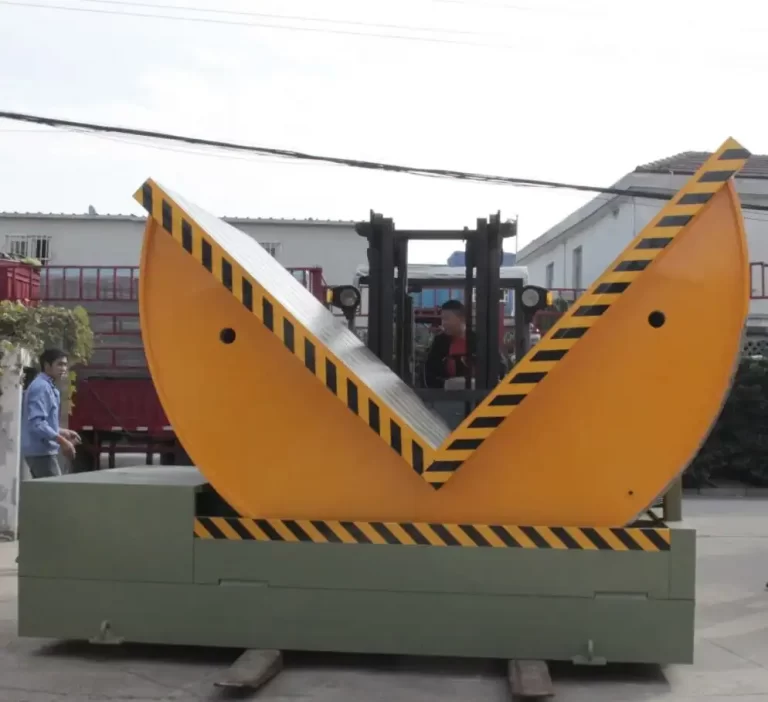
Understanding Cost Influencers in Coil Upender Purchases
When analyzing costs, consider equipment capacity and the level of automation. Larger capacity machines generally cost more, but they allow for increased production flexibility. Automation level similarly impacts price; fully automated systems offer greater ease of integration but require higher initial outlays. Custom features tailored to specific needs can enhance operation but come at added costs. Finally, factor in installation and commissioning services, which ensure that the equipment is ready for operation but might require significant upfront investment.
| Factor | Influence on Cost | Considerations |
|---|---|---|
| Machine Capacity | Higher capacity, higher cost | Align capacity with production demands to avoid overspending |
| Level of Automation | Increased automation, high cost | Evaluate ease and expense of integration |
| Customization | Additional features, more costly | Balance necessity of features with budget constraints |
| Installation/Service | Potentially costly service | Plan for professional setup to avoid operational disruptions |
Understanding these factors can help in making decisions that best fit company objectives and budgetary constraints. Analyzing these variables ensures a strategic approach to investing in coil upenders geared towards maximizing operational efficiency and return on investment.
Conclusion
Steel coil upenders present a valuable proposition featuring safety improvements, labor cost reduction, and operational efficiency. Although initial costs can be substantial, the long-term benefits of integrating automated handling systems are undeniable. These machines make a sound investment for manufacturers aiming to streamline operations and enhance safety and productivity.
Summarize the overall value proposition of steel coil upenders, weighing the pros and cons to determine if they are a sound investment for manufacturers.


